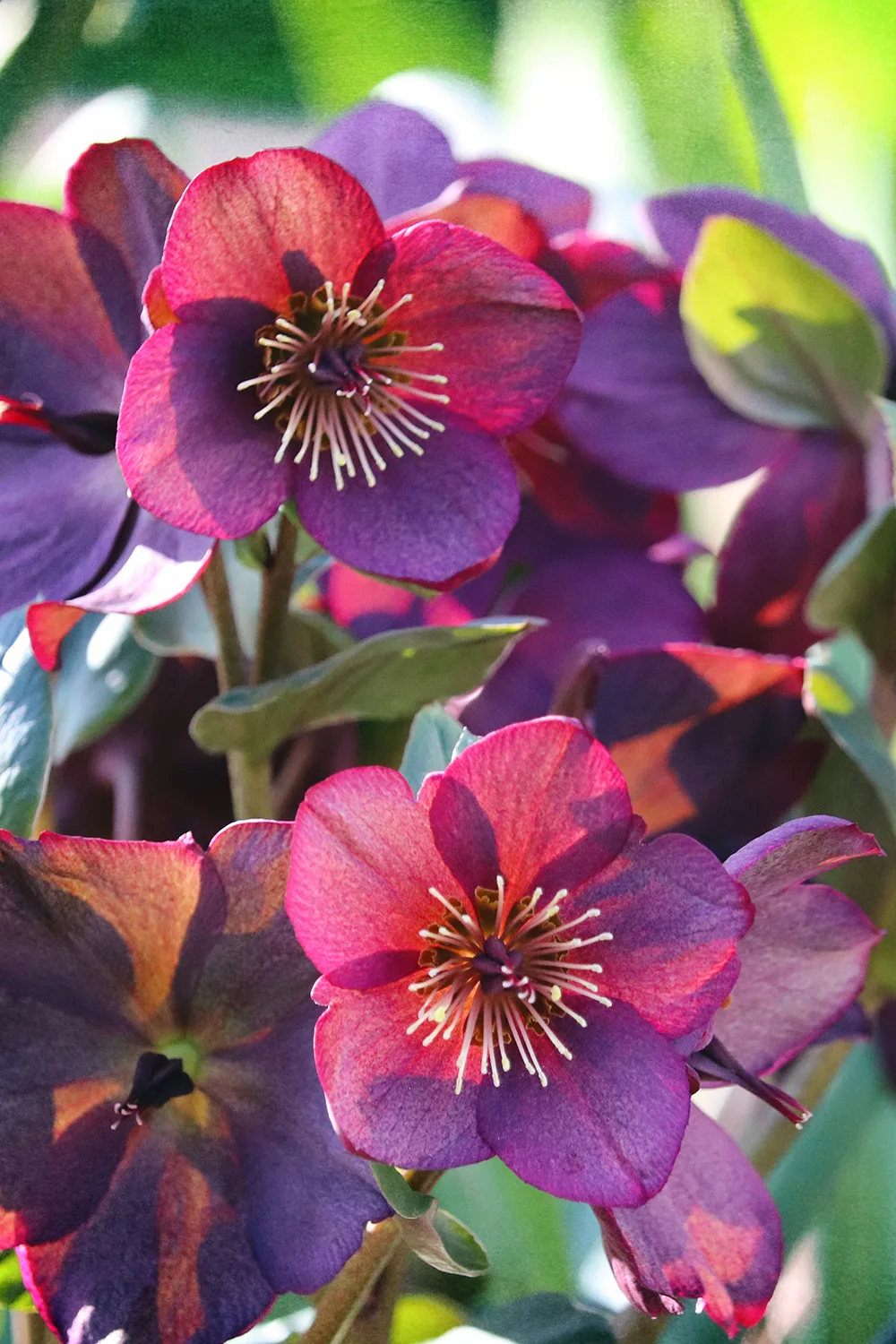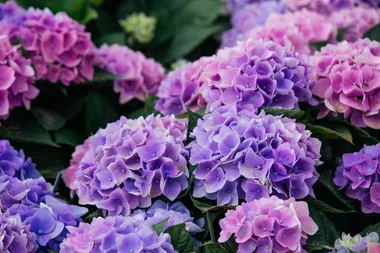As hellebores arrive, the winter show begins. These delicate, cup-shaped flowers with their gentle, bowing faces bring seasonal charm and create blooming blankets that guide you gently into spring as their petals subtly change colour while the season progresses.
They’re known as ‘winter roses’ for the delight they bring with their rose-like form and multitude of colours – from deep purple, yellow and bold gold to gentle peach, a touch of lime, pale pinks and pristine white. But what seals their reputation as all-stars is how undemanding they are. All they need is dappled shade – easy to find in winter. As perennials they’ll retreat to just foliage in summer before flowers emerge again to add a soft and sensual edge to your next winter.

How to grow hellebores
Aspect
Part shade – under deciduous trees you can create the prettiest look, but they tolerate being exposed to any dim winter sunlight.
Climate
Cold to warm temperate, from Sydney to Perth and further south.
Soil
Well-drained and slightly acidic. If your soil is heavy, create a raised bed or put in containers. If too sandy, add organic matter and mulch.
Water
Once a week until they’re established. Extra water during long, hot, dry periods.
Fertiliser
Fertilise in late autumn. Add potassium to encourage better-quality flowers.
Prune
In autumn, before flowering, trim previous year’s foliage to soil level.
Mulch
In autumn.
Plant
In spring or early autumn. In late summer, look for seedlings around plant skirts. They can be left to grow in place, or you can transplant them elsewhere. Seedlings bloom in about three years.

Where to plant hellebores in your garden
Under a tree
Plant your hellebores under a deciduous tree. They love the summer shade of the tree’s foliage and bloom when touched by winter’s dappled, low and soft light. Being shallow-rooted, hellebores draw nutrients from the upper soil levels.
On a slope
Plant hellebores on a slope – however gentle – so they can appreciate the drainage. Enjoy views of their nodding blooms from a vantage point further down the hill.
Plant in clumps
Watch them grow! Start off with a small collection of hellebores and plant them in a clump. The clump will increase in size each year because the roots produce rhizomes – underground stems – that pop up to the surface to give you more winter bloomers. They also self-seed and you can move the seedlings to another spot, where they’ll flower in about three years.
Types of hellebores

Hellebores come in such a wonderfully wide range of colours – earthy whites, greens, yellows and deep purples, often with speckles and flashes of colour. Choose something dynamic or go softly into the winter light.
Spoiled for choice. Traditionally, hellebores were a single row of cup-shaped petals, but breeders have developed doubles and semi-doubles with sensational marks and patterns – speckles, freckles, smudges and streaks.
Freshly cut hellebores for indoors

Cut for indoors. Coming out at the bleakest time of the year, hellebores bloom for at least three months. Cut stems quickly droop, often overnight, so use low in arrangements to overhang vase edge or prop up with other flowers or foliage. Or, cut off the stems and float flowers in a bowl of water – they’ll last about a week!
Top tips
- Cut hellebores will last beyond 24 hours if picked as the seed pod is developing – when the stamens are disappearing.
- In arrangements, pair hellebores with twiggy branches, such as spirea.
You might also like:









